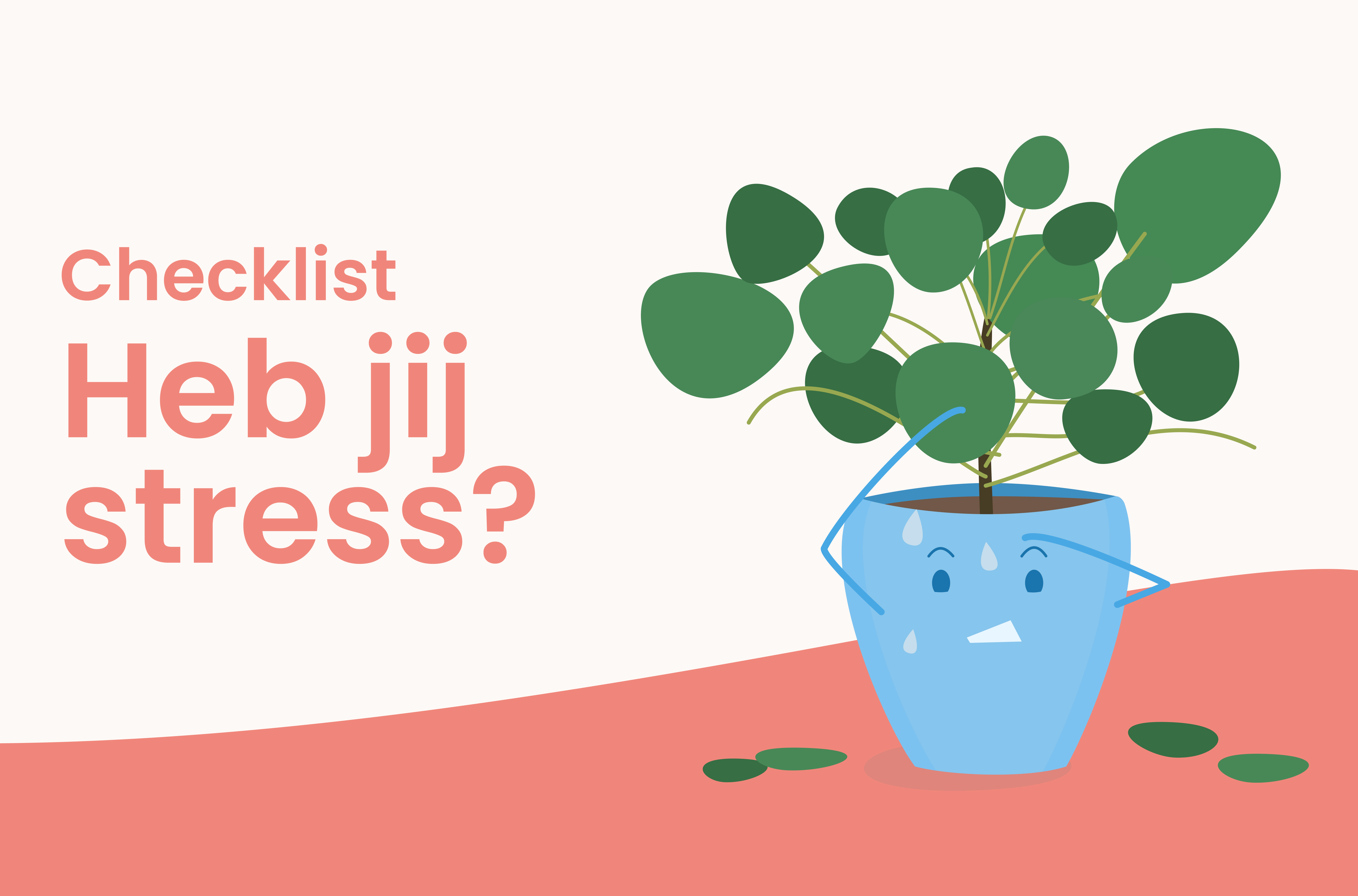How does it work?
- Take a moment for yourself and ask yourself: am I experiencing too much stress right now? Go through the checklist below with visible and invisible signs of stress.
- Can you tick off more than 10? Then you may be experiencing a fair amount of stress right now.
- Are you under too much stress? Below are some possible follow-up steps.
Visiblesignals
Behavior:
- Overtime / backlog of work
- Underperforming
- Confusing priorities
- Carelessness
- Errors
- (near) accidents
- No or hardly any breaks
- Social isolation
- Eating more or drinking more unhealthily
- More smoking
- Jumping from heel to heel
- Getting overly upset
Psychological/emotional:
- Irritable
- Aggressive
- Anxious
- Uninspired
- Quick scare
- Unmotivated
- Dissatisfaction
- Forgetful / absent-minded
- Sarcastic
- Gloomy
- Indecisive
- Chaotic
Physical:
- Overtired
- Slimming or gaining weight
- Nail Biting
- Trembling / trembling
- Sweating
- Tics
- Frequent crying
- Tense posture
- Hyperventilating
- Skin rash
- More frequent/long-term cold
- Headache
Invisible signals
Behavior:
- Less relaxation
- Insufficient relaxation
- More need for relaxation
- Talking less about difficult situations
- Insufficient / no mental support
Psychological/emotional:
- No distance from work
- Concerns about home
- Feelings of sadness / Depression
- Self-reproach
- Fear of the future
- Unreal feeling
- Feeling of discomfort
- Feeling of restlessness
- Uncertainty
- Sense of disinterest
- Persistent brooding thoughts
Physical:
- Tension in the neck or shoulders
- Dizziness / Weakness
- Seeing stars
- Sleep problems
- Headache / Migraine
- Bloating
- Abdominal pain / Stomach discomfort
- High blood pressure
- Heart palpitations
- Chest pain
Wondering what you can do about too much stress?
A temporary state of stress is not abnormal. In fact, experiencing occasional stress can help us stay sharp and achieve goals. But when stress persists for too long or recovery from a stress reaction becomes difficult, it is important to pay attention. In fact, prolonged stress without adequate recovery can lead to burnout, chronic fatigue, and other health problems.
Here are some steps to get a grip on your stress:
- Investigate the cause of your stress and try to address the source. Is it work pressure? A difficult collaboration with someone? Or perhaps worries outside of work? Try to identify the underlying cause and consider how best to address it. Is a specific person involved? Then consider starting the conversation and honestly sharing what you are feeling.
- Get into the habit of regularly evaluating your stress levels; stress can creep up without you even realizing it. Therefore, schedule a moment every few weeks to review the stress checklist, and make adjustments as needed. Reducing stress is not a one-time action; it requires regular attention and small steps in the right direction.
- Learn more about stress, to gain insight into your stress patterns and learn tools to actively deal with it. We find the module on stress from Mindlab by BloomUp helpful for this :)
- Would you like additional support? If you find that stress persists despite your best efforts, it may be helpful to talk to a professional. If so, consider an introductory consultation with one of the mental sidekicks.
With these steps, you can tackle your stress level step by step and prevent it from taking over unnoticed.
Would you like BloomUp to support your organization? Schedule a no-obligation consultation.


.png)

